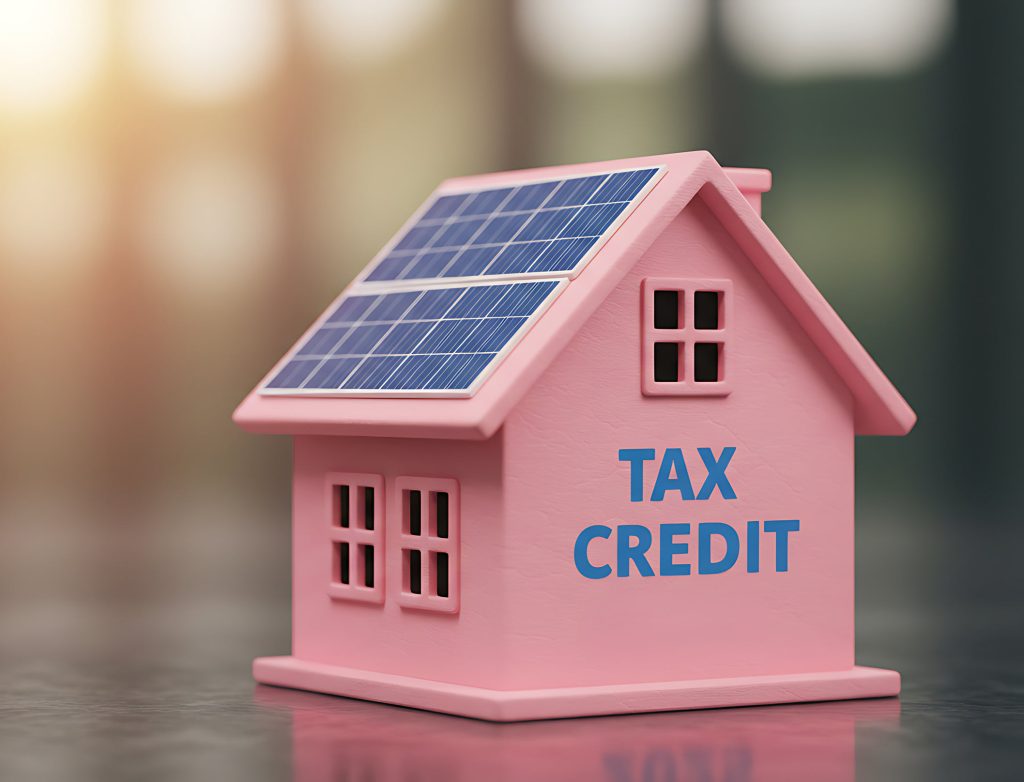 How Homeowners Can Still Meet the 2025 Solar Tax Credit Deadline
How Homeowners Can Still Meet the 2025 Solar Tax Credit Deadline
The 30 % Residential Clean Energy Credit (IRC Section 25D) is available through December 31, 2025, known by most solar tax credit. To qualify, your home solar energy system must be installed and producing electricity (“placed in service”) by the deadline (EnergySage, 2024). With installers already facing long backlogs, homeowners need to act quickly. This guide breaks down the national timeline for a typical residential solar project and provides clear steps to stay on track.
Step 1: Request quotes and sign a contract (Weeks 0–2)
The first step is securing accurate, itemized quotes from trusted solar installers. Acting quickly ensures that your project enters the scheduling queue before installers are fully booked for the year.
- Contact 2–3 vetted solar installers and request detailed proposals that include all costs (equipment, labor, permitting, and interconnection).
- Compare the proposals carefully, focusing on both pricing and company reputation.
- Sign a contract promptly and pay any required deposit so design and permitting can begin.
Step 2: Engineering design, site survey, and plan approval (Weeks 2–4)
After signing, your installer will complete technical assessments to design a system that meets both code and performance standards. This step bridges the gap between the sales process and the official permitting stage.
- Installers perform a site assessment, roof inspection, and electrical review to finalize your system layout.
- A set of permit-ready plans is created, including electrical diagrams and structural calculations.
- Local permitting offices typically take 30–45 days to review submissions, though some jurisdictions using SolarAPP+ automation average 33 days (NREL, 2024).
Step 3: Permit approval and interconnection application (Weeks 4–8)
Once plans are filed, the installer must secure both local permits and utility interconnection approvals. This stage often drives the longest delays in the project timeline.
- Your installer submits applications to both the local authority having jurisdiction (AHJ) and the utility company.
- Utilities require confirmation that the system will not disrupt grid safety or reliability.
- On average, combined permitting and interconnection can take 60–90 days nationwide (EnergySage, 2024).
Step 4: Physical installation (Weeks 8–10)
With approvals in hand, your installation is scheduled, and crews arrive to put the system in place. This is typically the fastest part of the process, though scheduling bottlenecks can still occur.
- Technicians install the racking, panels, wiring, inverter(s), and batteries if included.
- Most residential installations require 2–5 on-site days, usually spread across 1–2 weeks (IGS Energy, 2024).
- Inspectors may also conduct interim checks during this phase.
Step 5: Final inspection, utility approval, and commissioning (Weeks 10–12+)
The last phase ensures your system is safe, compliant, and ready to generate electricity. Only once it passes inspection and receives Permission to Operate (PTO) is it considered eligible for the tax credit.
- Local officials inspect the installation to verify code compliance.
- The utility grants PTO, confirming that the system can feed into the grid.
- Once commissioned, the system is “in service,” and you can claim the credit using IRS Form 5695 (IRS, 2024).
The clock is ticking toward the 2025 Solar Tax Credit December 31st deadline. Homeowners who move now still have time, but waiting risks missing the 30 % tax credit. By choosing experienced installers, monitoring approvals closely, and keeping all documentation, you can ensure your system qualifies on time.
Download Sol-Ark’s Solar Tax Credit Deadline Checklist for a quick reference.
References:
EnergySage. (2024). How long does it take to install solar panels? https://www.energysage.com/solar/how-long-does-it-take-to-install-solar-panels/
EnergySage. (2024). Solar tax credit explained. https://www.energysage.com/solar/solar-tax-credit-explained/
National Renewable Energy Laboratory. (2024). SolarAPP+ permitting timelines. https://www.nrel.gov/
IGS Energy. (2024). Solar installation timeline. https://www.igs.com/energy-resource-center/energy-101/solar-panel-installation-timeline
Internal Revenue Service. (2024). How to claim the Residential Clean Energy Credit. https://www.irs.gov/credits-deductions

 How Homeowners Can Still Meet the 2025 Solar Tax Credit Deadline
How Homeowners Can Still Meet the 2025 Solar Tax Credit Deadline